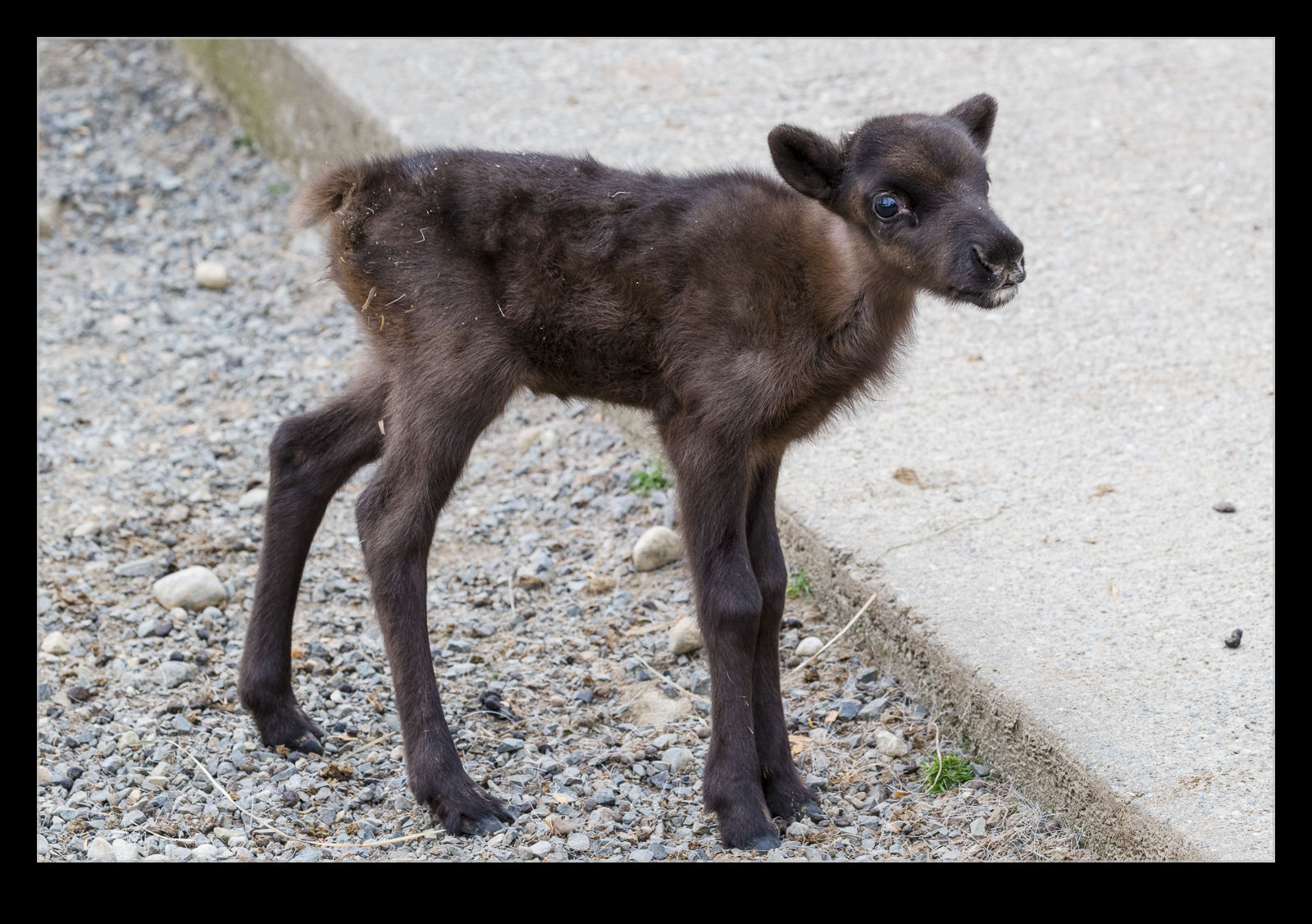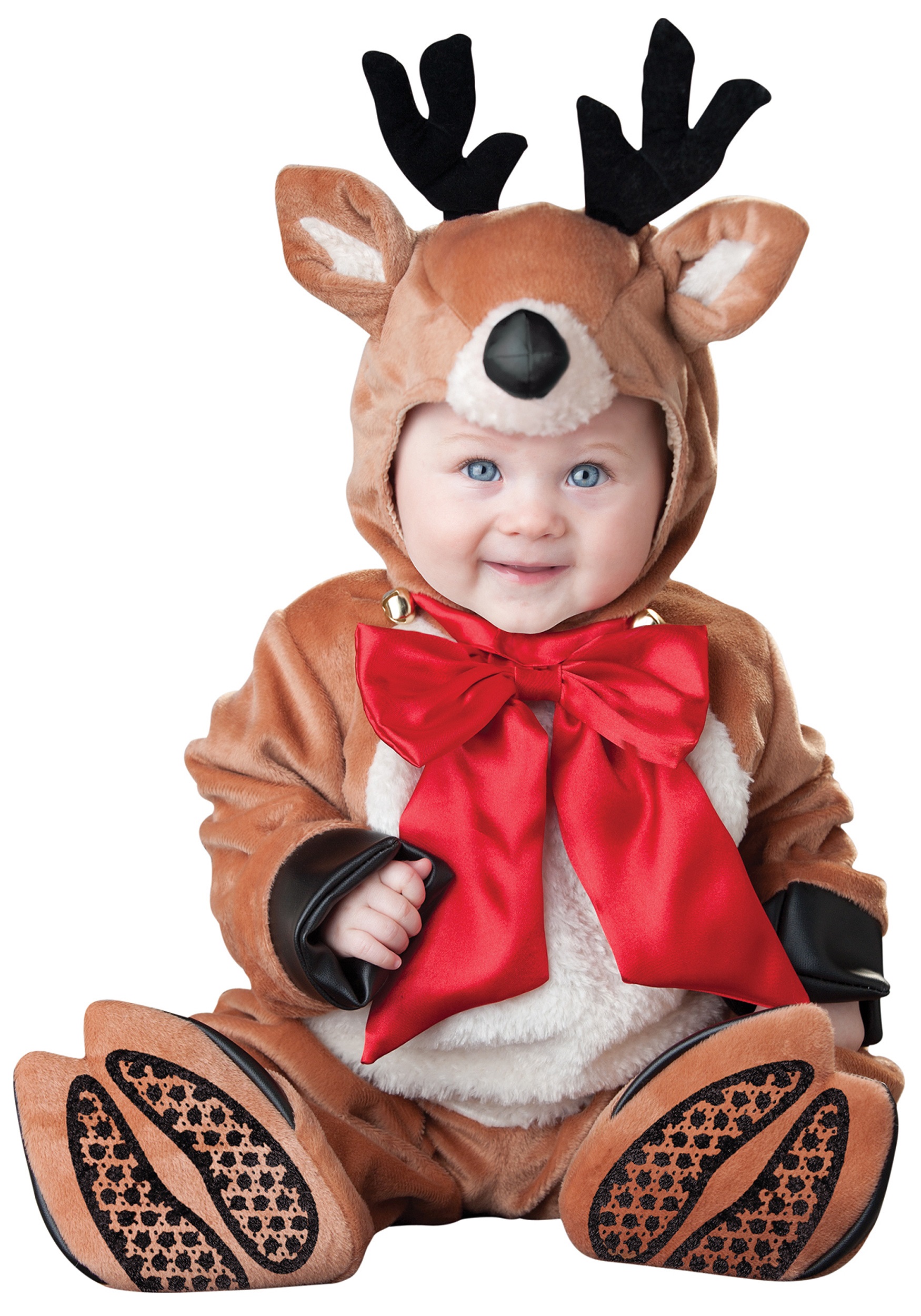Baby Reindeer: The Cutest Creatures Of The Arctic And Beyond
When you think of baby reindeer, images of snowy landscapes and playful creatures with soft fur probably come to mind. These adorable little animals have captured the hearts of millions around the world. Whether it's through holiday movies or nature documentaries, baby reindeer are more than just cute—they're fascinating creatures with unique traits and behaviors that make them stand out in the animal kingdom. So, let's dive into the world of baby reindeer and uncover what makes them so special!
Baby reindeer aren't just a symbol of Christmas; they're an essential part of ecosystems in the Arctic and sub-Arctic regions. From their birth to their growth into majestic adults, these animals go through incredible transformations. Understanding their life cycle, habits, and challenges is not only fascinating but also crucial for their conservation.
As we explore the world of baby reindeer, you'll learn about their biology, habitat, and the threats they face. This article is designed to give you a comprehensive look at these adorable creatures, ensuring you leave with a deeper appreciation for their role in nature. So, buckle up and get ready to meet the cutest residents of the Arctic!
- 2025 Kannada Movie Guide Whats New Where To Watch
- Kannada Movies 2024 Reviews Where To Watch Movierulz Risks
Table of Contents
- Introduction to Baby Reindeer
- Biological Facts About Baby Reindeer
- Where Do Baby Reindeer Live?
- What Do Baby Reindeer Eat?
- Behavioral Traits of Baby Reindeer
- Growth Stages of Baby Reindeer
- Threats to Baby Reindeer
- Efforts to Protect Baby Reindeer
- Interesting Facts About Baby Reindeer
- Final Thoughts on Baby Reindeer
Introduction to Baby Reindeer
Baby reindeer, also known as calves, are born during the spring months when the weather is mild and food is abundant. Their arrival coincides with the blooming of vegetation, which provides their mothers with the nutrients needed to produce milk. This timing is crucial for their survival, as they need to grow strong quickly to withstand the harsh winter ahead.
One of the most interesting aspects of baby reindeer is their ability to stand and walk within an hour of being born. This early mobility is essential for escaping predators and keeping up with the herd. Imagine being able to walk so soon after being born—talk about being a natural athlete!
Why Are Baby Reindeer So Popular?
There's something about baby reindeer that makes people go "aww." It could be their big, curious eyes or their fluffy coats, but there's no denying their charm. They've become symbols of innocence and wonder, often featured in children's books, holiday cards, and even animated films. But beyond their cuteness, baby reindeer play a vital role in their ecosystems.
- Movierulz 2025 Watch Latest South Indian Movies Series Online
- Jonathan Roumies Wife The Truth About His Relationship Status
Biological Facts About Baby Reindeer
Let's dive into the science behind these adorable creatures. Baby reindeer are born with a reddish-brown coat that helps them blend into their surroundings. As they grow, their fur thickens to provide insulation against the cold. This adaptation is crucial for surviving the harsh winters of the Arctic.
Did you know that baby reindeer are born without any scent? This lack of scent helps protect them from predators, as it makes it harder for animals like wolves and bears to detect them. Nature has its own way of giving these little ones a fighting chance.
Key Characteristics of Baby Reindeer
- They are born with a reddish-brown coat that changes as they grow.
- They can stand and walk within an hour of birth.
- They have no scent, making it harder for predators to find them.
- They rely on their mother's milk for the first few months of life.
Where Do Baby Reindeer Live?
Baby reindeer are native to the Arctic and sub-Arctic regions, including parts of North America, Europe, and Asia. These areas are characterized by long, cold winters and short summers. The reindeer's ability to adapt to such extreme conditions is one of the reasons they've thrived in these regions for thousands of years.
During the summer months, baby reindeer can be found grazing in open tundra landscapes. In the winter, they migrate to areas with less snow, where they can access food more easily. This migration pattern is crucial for their survival, as it ensures they have access to the resources they need year-round.
Adaptations to Extreme Environments
Reindeer, including baby reindeer, have several adaptations that help them survive in harsh environments. Their hooves are wide and act like snowshoes, preventing them from sinking into the snow. They also have a special layer of fat that provides insulation and energy during the lean winter months.
What Do Baby Reindeer Eat?
In the first few months of life, baby reindeer rely entirely on their mother's milk. This milk is rich in nutrients and helps them grow quickly. As they get older, they start to graze on grasses, mosses, and lichens. These plants are abundant in their natural habitat and provide the energy they need to thrive.
Interestingly, reindeer have a special enzyme in their stomachs that allows them to digest lichens, which are not easily digestible by most other animals. This adaptation gives them access to a food source that many other herbivores can't utilize.
Key Foods in a Baby Reindeer's Diet
- Mother's milk
- Grasses
- Mosses
- Lichens
Behavioral Traits of Baby Reindeer
Baby reindeer are social animals that live in herds. This social structure provides them with protection from predators and helps them stay warm during the cold winter months. Within the herd, baby reindeer often form small groups with other calves, where they play and learn important survival skills.
Play is an essential part of a baby reindeer's life. Through play, they develop their muscles, improve their coordination, and learn how to interact with others. It's not just fun—it's a crucial part of their development!
How Do Baby Reindeer Communicate?
Reindeer use a variety of sounds and body language to communicate with each other. Calves often make soft bleating sounds to call out to their mothers. They also use body movements, such as head shaking and ear flicking, to express different emotions and intentions.
Growth Stages of Baby Reindeer
From birth to adulthood, baby reindeer go through several growth stages. In the first few months, they grow rapidly, gaining weight and strength. By the time they're six months old, they're weaned off their mother's milk and are fully independent.
As they grow, baby reindeer develop their characteristic antlers. Male reindeer, known as bulls, grow larger antlers than females, known as cows. These antlers are shed and regrown each year, a process that requires a lot of energy and nutrients.
Key Milestones in a Baby Reindeer's Life
- Birth: Born in spring with a reddish-brown coat.
- First Steps: Can stand and walk within an hour of birth.
- Weaning: Stop relying on mother's milk around six months old.
- Antler Growth: Begin growing antlers as they mature.
Threats to Baby Reindeer
Despite their adaptability, baby reindeer face several threats in the wild. Climate change is one of the biggest challenges, as it affects the availability of food and the timing of seasonal migrations. Warmer temperatures can also lead to the spread of diseases and parasites that can harm these vulnerable animals.
Predators such as wolves, bears, and golden eagles also pose a significant threat to baby reindeer. Their lack of scent and ability to blend into their surroundings help protect them, but they're still at risk, especially during the first few months of life.
How Climate Change Affects Baby Reindeer
As the Arctic warms, the habitats of baby reindeer are changing. Thawing permafrost and changing vegetation patterns are altering the landscape, making it harder for them to find food. This shift in their environment could have long-term consequences for their survival.
Efforts to Protect Baby Reindeer
Conservationists around the world are working hard to protect baby reindeer and their habitats. Efforts include monitoring populations, protecting critical habitats, and addressing the impacts of climate change. By raising awareness and implementing sustainable practices, we can help ensure these incredible animals have a future.
Organizations like the World Wildlife Fund (WWF) are leading the charge in reindeer conservation. Through research, advocacy, and community engagement, they're making a difference in the lives of these animals and the ecosystems they inhabit.
What Can You Do to Help?
There are several ways you can contribute to the conservation of baby reindeer. Supporting organizations that work to protect their habitats, reducing your carbon footprint, and spreading awareness are all important steps. Every little action counts when it comes to preserving these incredible creatures.
Interesting Facts About Baby Reindeer
Baby reindeer are full of surprises! Here are a few interesting facts you might not know:
- Reindeer are the only deer species where both males and females grow antlers.
- They have a unique ability to see ultraviolet light, which helps them spot predators and food in snowy conditions.
- Reindeer hooves change with the seasons—hard in the summer for digging and soft in the winter for gripping ice.
These fascinating traits make baby reindeer even more remarkable and deserving of our admiration and protection.
Final Thoughts on Baby Reindeer
From their early days as newborns to their growth into majestic adults, baby reindeer are truly remarkable creatures. They face numerous challenges in their natural habitats, but their resilience and adaptability continue to inspire awe. By understanding their biology, behavior, and the threats they face, we can work together to ensure their survival for generations to come.
So, the next time you see a baby reindeer in a movie or a nature documentary, take a moment to appreciate the incredible journey they go through. And if you're feeling inspired, consider taking action to support their conservation. Every little bit helps, and together, we can make a difference!
What did you think of this article? Do you have any questions or comments about baby reindeer? Feel free to share your thoughts below, and don't forget to check out our other articles for more fascinating insights into the animal kingdom!



Detail Author:
- Name : Flossie Muller III
- Username : mcrona
- Email : stracke.ernest@abbott.com
- Birthdate : 1993-09-25
- Address : 57280 Eden Mall Garrytown, WY 50043
- Phone : 223.867.3866
- Company : Miller, Breitenberg and Runolfsson
- Job : Agricultural Product Grader Sorter
- Bio : Neque quas illum labore sed. Totam quaerat mollitia nihil nulla quos cumque. Minus totam aut itaque magni numquam.
Socials
linkedin:
- url : https://linkedin.com/in/hanna.schmeler
- username : hanna.schmeler
- bio : Sit deserunt quos unde est.
- followers : 6762
- following : 2920
tiktok:
- url : https://tiktok.com/@hanna.schmeler
- username : hanna.schmeler
- bio : Voluptas repudiandae tenetur quia qui.
- followers : 1585
- following : 1838
facebook:
- url : https://facebook.com/hanna_xx
- username : hanna_xx
- bio : Iste voluptas id libero vel eos. Aliquid reprehenderit debitis dolorem.
- followers : 3762
- following : 514
twitter:
- url : https://twitter.com/hanna7769
- username : hanna7769
- bio : Itaque aliquam quis quod quam maiores sed. Ipsam quia quis totam. Autem voluptates repellendus deleniti voluptatem. Neque voluptate autem id rerum et.
- followers : 4922
- following : 2651
instagram:
- url : https://instagram.com/schmeler1993
- username : schmeler1993
- bio : Suscipit possimus eos amet voluptas. Rerum laboriosam quia debitis facilis veritatis.
- followers : 580
- following : 1202